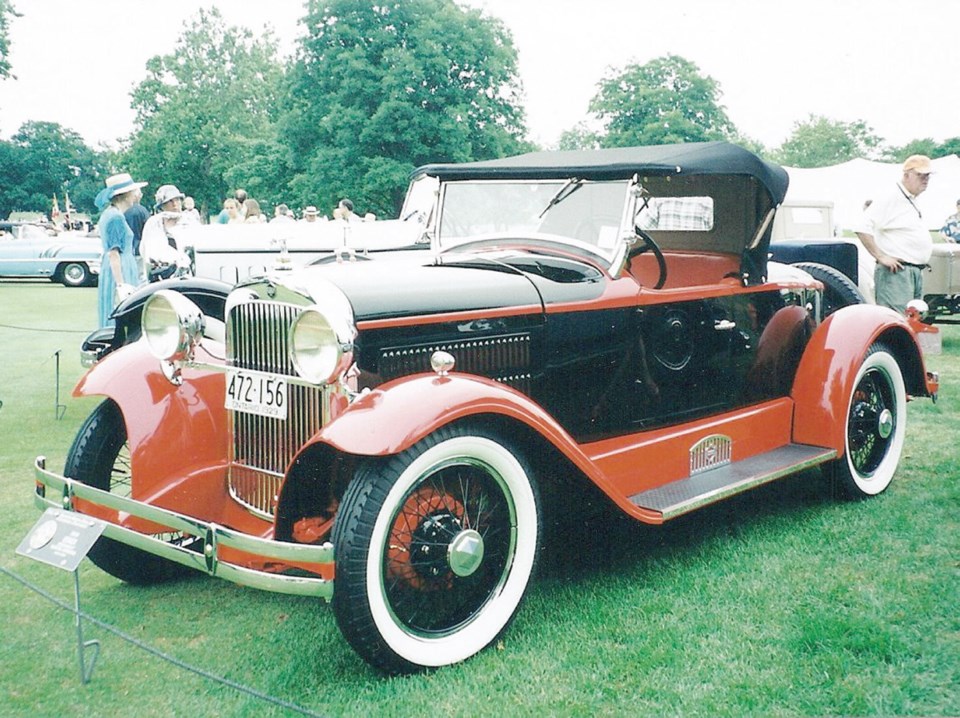The Hudson Motor Car Co. was founded in Detroit in 1909 with the financial backing of department-store magnate Joseph L. Hudson. It established a reputation for quality cars that gradually grew more expensive, so to broaden its market appeal, Hudson introduced a new 1919 light car called the Essex named after an English county to give it a little extra cachet.
The name wasn’t the only British influence. The Essex’s four-cylinder engine had “English type” dimensions, meaning the small bore (favoured in England for tax purposes). Its small 85.7-mm bore and long 127-mm stroke gave a displacement of 2.9 litres. A further unusual feature was the F-head design with intake valves in the cylinder head and exhaust valves in the block.
With 55 horsepower in an era when the Ford Model T had 20, the Essex was quite fast. It soon established numerous speed and endurance records including a 50-hour marathon in Cincinnati covering 4,890 kilometres at an average of 97.81 km/h.
The Essex had Hudson’s traditional “wet” clutch with holes in the clutch plate into which round cork disks were inserted, then heat- and pressure-treated to stay in place. It ran in an oil bath and was smooth and effective if the oil level was carefully maintained.
With over 20,000 first year sales, the new Essex sold well, although not in the Model T league. Then in 1921, Essex made a pioneering move by offering a two-door closed coach body priced at only $1,495. This was $300 more than the open model, but still reasonable compared with other closed cars.
The coach’s price would be reduced to $1,245 in 1922, and ultimately to $895 in 1925, only five dollars more than an equivalent open car. Although competitors derided the closed Essex as “a packing crate on wheels,” it was exactly what the market wanted. It even prompted General Motors’ legendary president Alfred P. Sloan Jr. to remark: “Nothing like that had ever been seen before in the automobile industry, and the Essex coach had a considerable vogue.”
The moderately priced Essex coach led a revolution. Up to 1925, open cars had predominated. After that watershed year, more closed cars were sold and open cars gradually shrank to a permanently small percentage of the market.
For 1924, the Essex abandoned the four in favour of a small “high speed” side-valve six, again with a bore and stroke of only 66.67 by 101.6 mm and displacement of 2.13 litres.
It was “high speed” out of necessity because the Essex’s truck-like 5.6:2 rear axle ratio made the poor little long-stroke six spin 3,700 revolutions at 97 km/h. And its 28 horsepower was pretty anemic compared with the lusty four’s, so performance was lacking.
Since the Essex six paled before the four’s performance, Essex decided to launch a faster, sportier model. This was the 1927 Speedster, which unfortunately was a speedster in name only. John Bond, editor of Road & Track and an engineer, wrote that the Essex could reach just 85 km/h, and “for 3 minutes only.”
Essex decided to get more serious about sportiness, and in 1929 introduced the boattailed Speedabout that lived up to its name. With the six now up to 2.6 litres and 55 horsepower it gave the Speedabout a 120 km/h top speed and a claim of 100 km/h “all day.”
This cruising ability was made possible by an unusual transmission in which second gear was an overdrive with a higher ratio than high gear. The technique was to start off in first, shift to third, and then back to second. Although unorthodox, it saved the engine from high r.p.m. The overdrive second did ease the strain, but the car was actually faster in high, where 113 km/h required 4,000 r.p.m.
The Essex engine had another unusual characteristic in that its counterweights were bolted onto the crankshaft rather than cast integral with it as other manufacturers did. It was a longtime Hudson feature.
Unfortunately, the Speedabout’s introduction was soon overshadowed by the stock-market crash and the Great Depression. The result was that few, reportedly only five, were built, making it one of the rarest of cars.
The Depression saw Essex sales plunge, so in 1932 Hudson launched the Essex Terraplane model, with its six-cylinder engine now up to 3.5 litres and 90 horsepower. Its performance rivalled the newly introduced Ford V-8, and the Terraplane name became so popular the Essex designation was discontinued after the 1933 models, and another interesting nameplate slid into history.
